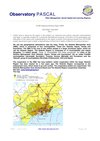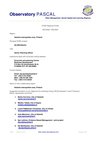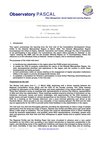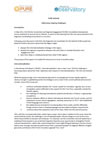Helsinki, Finland
We use two geographical delineations (see the map). Firstly, the Helsinki Metropolitan Area (HMA), which is composed of four municipalities. These are: Helsinki, Espoo, Vantaa and Kauniainen. The HMA is the core of one million people in a larger functional region, which we call the Helsinki Region. The Helsinki Region is composed of 14 municipalities and makes altogether 1.3 million people. These 14 municipalities form three sub-groups: the cities of the Helsinki Metropolitan Area (Helsinki, Espoo, Vantaa and Kauniainen), the so called KUUMA municipalities (Järvenpää, Nurmijärvi, Tuusula, Kerava, Mäntsälä and Pornainen) and the ’Neloset’ group of municipalities (Hyvinkää, Kirkkonummi, Vihti and Sipoo).
The cooperation in the HMA has long tradition, whilst cooperation within the larger Helsinki Region has been started for a few years ago. The Helsinki Region corresponds to the employment zone, which tends to go even further. The cooperation bodies are respectively: The Helsinki Metropolitan Area Advisory Board and The Helsinki Region Cooperation Assembly.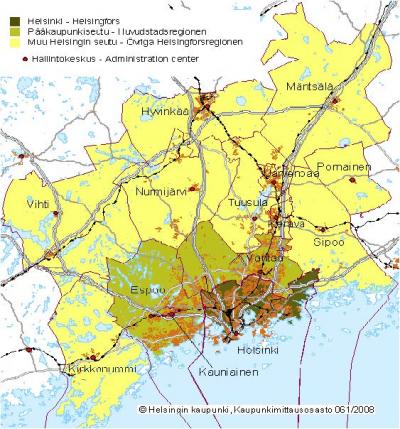
The Helsinki Region is a growing Metropolitan Area, with a population of 1.3 million, on the shore of the Baltic Sea. The region is characterised by its highly educated population, high standard of living, diverse services and highly specialised economic life. In addition to the region’s own knowhow and economic life, the development of the Helsinki Region is sparked by its close connections to other metropolises. Geographically, the nearest of these are St. Petersburg in the east, Tallinn in the south and Stockholm in the west. The Baltic Sea also connects the Helsinki Region to many other Northern European metropolitan regions. The Helsinki Region is an international traffic junction and a gateway to culture and tourism in other parts of Finland.
 Printer-friendly version
Printer-friendly version- 268 reads

